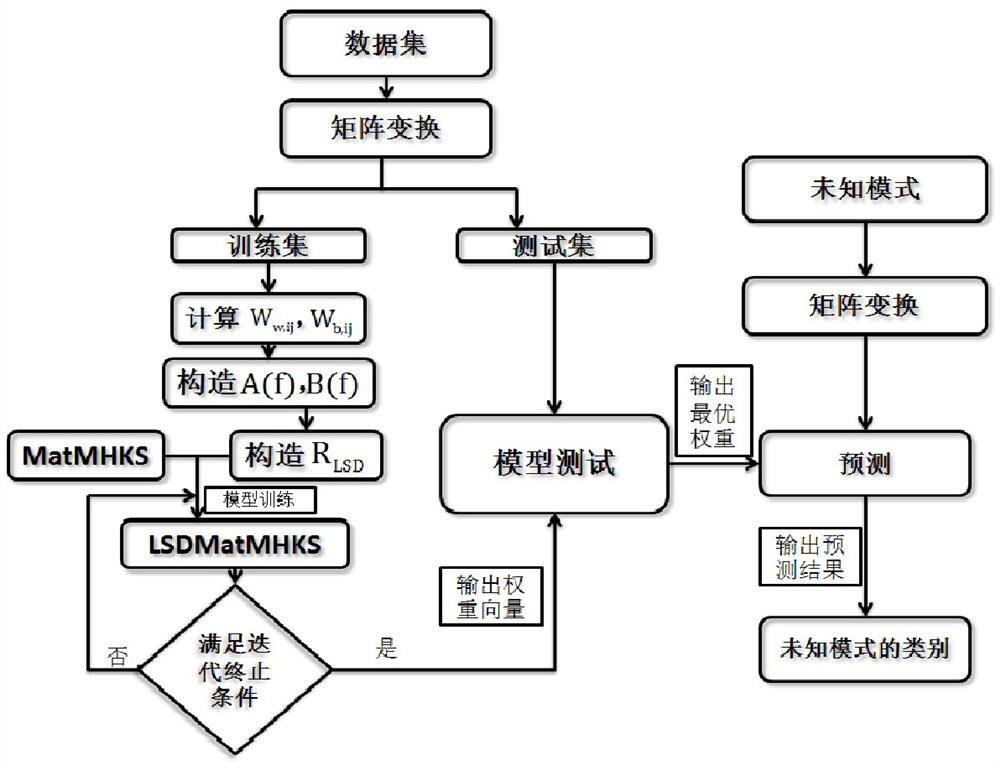A Matrix Classification Model Based on Local Sensitive Discrimination
A classification model and local sensitivity technology, which is applied in the field of pattern recognition, can solve the problem of not taking into account the local sensitivity discrimination information of the matrix mode, and achieve the effect of improving classification accuracy, improving stability, and improving overfitting problems
- Summary
- Abstract
- Description
- Claims
- Application Information
AI Technical Summary
Problems solved by technology
Method used
Image
Examples
Embodiment Construction
[0010] The present invention will be further introduced below in conjunction with accompanying drawing and embodiment: the method of the present invention is divided into four major steps altogether.
[0011] The first step: data set collection and transformation.
[0012] First, process the collected data set. If the data set is not numerical, it will be numericalized. For the picture data set, it will be numericalized and then use the classic will algorithm to reduce its dimension for subsequent processing; secondly, the The acquired dataset is converted to matrix mode, e.g. Converting it to matrix mode is ,in .
[0013] The second step: model training.
[0014] 1) First construct the regularization term
[0015] Assume that the matrix pattern of the binary classification is . Using its training set to define the local sensitive weight matrix as follows:
[0016] (1)
[0017] (2)
[0018] Construct intra- and inter-class subgraphs and , we define ...
PUM
 Login to View More
Login to View More Abstract
Description
Claims
Application Information
 Login to View More
Login to View More - R&D
- Intellectual Property
- Life Sciences
- Materials
- Tech Scout
- Unparalleled Data Quality
- Higher Quality Content
- 60% Fewer Hallucinations
Browse by: Latest US Patents, China's latest patents, Technical Efficacy Thesaurus, Application Domain, Technology Topic, Popular Technical Reports.
© 2025 PatSnap. All rights reserved.Legal|Privacy policy|Modern Slavery Act Transparency Statement|Sitemap|About US| Contact US: help@patsnap.com



